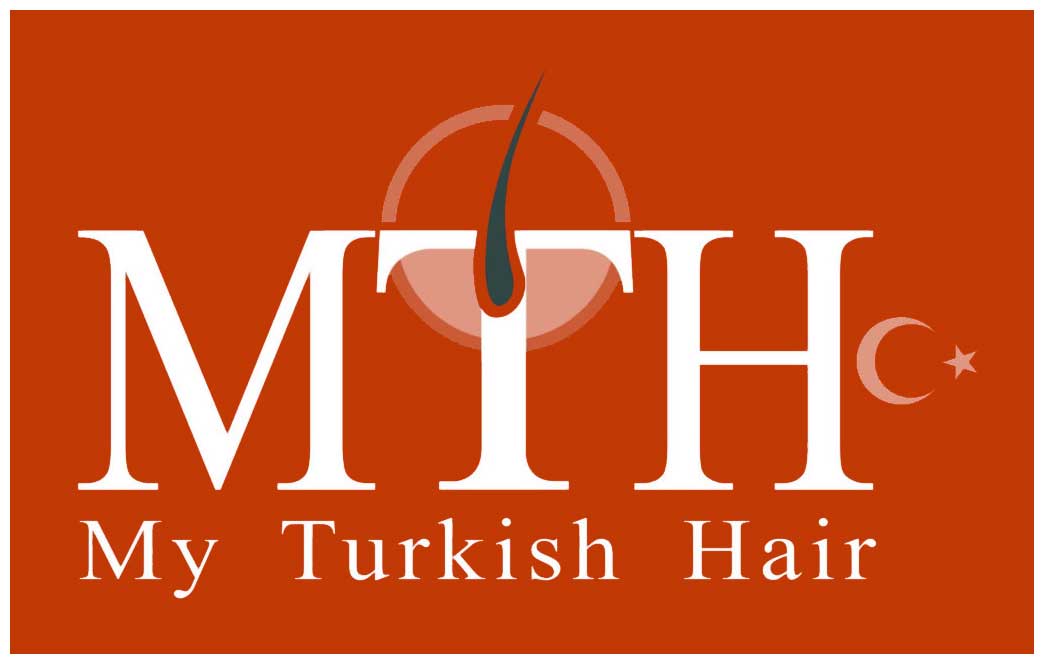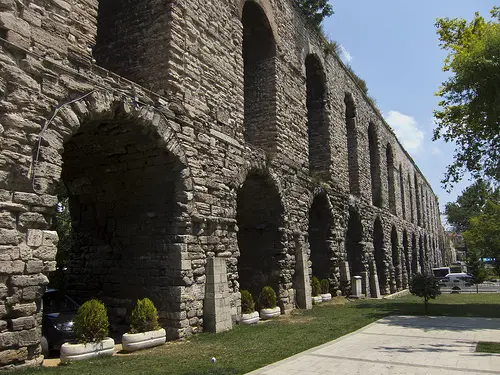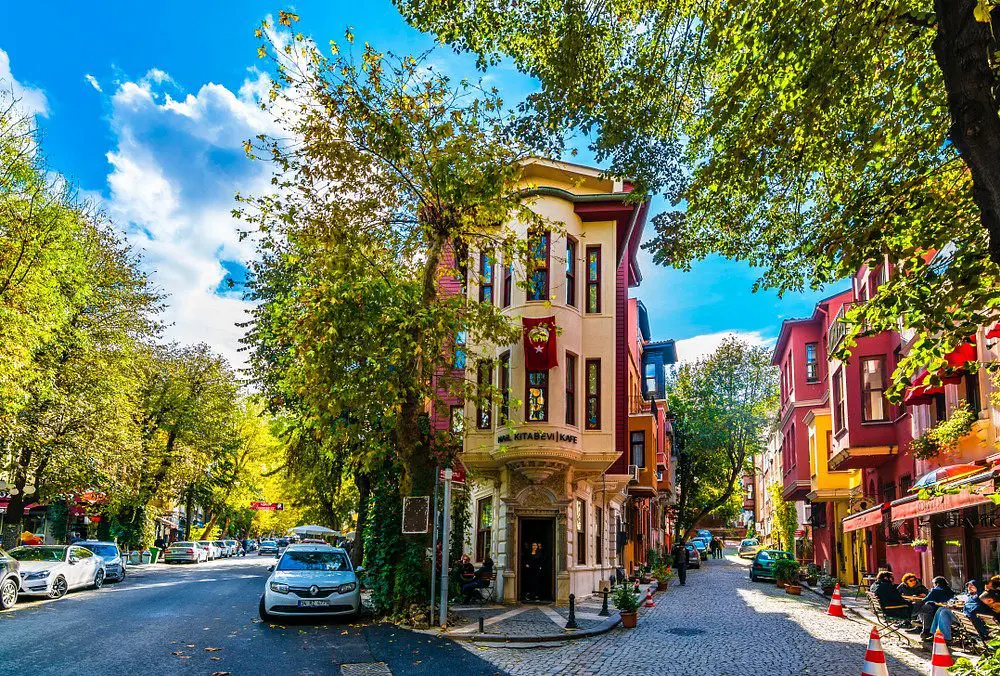Istanbul is the largest city in Turkey and one of the largest cities in Europe with around 16 million inhabitants. It is also the capital of the province which carries the same name, one of the 81 into which Turkey is divided.
Istanbul is divided into two parts by the Bosporus Strait, one belonging to Europe and the other one to Asia. Its prodigious history and constant economic activity are due to its strategic position, between the Mediterranean and the Black Sea, and between Europe and Asia. Until the year 330 it was called Byzantium, and then took the name of Constantinople until 1453. Its current name, Istanbul, was granted to it on March 28, 1930. Istanbul was the capital of the Eastern Roman Empire and Ottoman Empire. When the Republic was proclaimed on 29 October 1923, the capital became Ankara. The vast majority of the population is Muslim, with Christian and Jewish minorities. Furthermore, it is the seat of the Ecumenical Patriarchate of Constantinople, head of the Orthodox Church. In 1985 it was declared a World Heritage Site.
PROGRAMME
- Hagia Sophia: built in 537 at the behest of Justinian, the Roman emperor, the most majestic monument of the Byzantine period, it is one of the symbols of Istanbul;
- The Blue Mosque: built by Sultan Ahmet in 1617, its name comes from the colours of the 20,000 tiles built in Nicea where the first Ecumenical Council was held;
- The Hippodrome: built in the 2nd century by the Roman emperor Septimius Severus for horse racing, today it is a square which holds many ancient monuments.
- Topkapı Palace: built by Sultan Mehmet the Conqueror in 1478, for 4 centuries the Ottoman government’s main residence and administrative headquarters.
- The Basilica Cisterna: one of the most idyllic buildings of the Byzantine period, it was built at the behest of Emperor Justinian. It functioned as a water reserve for centuries.
- The Grand Bazaar: the largest and oldest covered market in the world, it is still active with 75 narrow streets, 22 entrances and approx. 3000 shops that attract millions of travellers every year. It is also considered one of the first shopping centres in the world.
PROGRAMME
- The Spice Market: it was built in 1664 by Hatice Turhan Sultan, mother of Sultan Mehmet IV.
- A Bosphorus cruise, lasting approx. 90 minutes to the second Bosphorus bridge. The tour runs between the Asian and European sides of the city.
- The Galata Tower: it was built by the Genoese in 1348 as a surveillance tower.
- The headquarters of the whirling dervishes: today, the ground floor is a museum and dervish shows are organized on the first floor every Sunday.
- Hotel Pera Palas: built to accommodate the passengers of the historic Orient Express train, several famous Orient Express passengers stayed there, including the first president of the Turkish Republic Kemal Ataturk, Agatha Christie, Ernest Hemingway, King Eduardo VIII, Alfred Hitchcock, Jacqueline Kennedy Onassis, Zsa Zsa Gabor and Mata Hari.
- Saint Anthony Catholic Church, the largest Catholic place of worship in Istanbul built in neo-Gothic-Venetian style, was presided over by Italian priests. Mass is held in Italian, Polish, Turkish and English.
- The nineteenth-century galleries in Beyoglu: where there are several particular and historical passages (arcades).
- Taksim Square: not only the most symbolic square of Istanbul but all of Turkey.
PROGRAMME
- The Zeyrek Mosque: originally the Church of Christ Pantocrator, it was converted into a mosque by the Ottomans. The mosque still retains some traces of the Byzantine period.
- Valente Aqueduct: built by the Romans, it fed the Roman cisterns bringing fresh water from the Belgrade Forest.
- The Koranic School of the Fatih Mosque: located in the complex of the Moscheadi Fatih, it is the school where students study to become imams after 8 years of study.
- The Fatih Mosque: built after the conquest of Istanbul, it is one of the largest and most beautiful mosques in the city.
- The Greek School: located in the Greek district Fener and also called the Red School, it was built in 1881 and in the XIV. c. had 700 Greek students. It is still active in the Fener district;
- The Church of Saint Mary of the Mongols: built in the XII. c., it is the only Byzantine church not converted after the fall of Constantinople and is still active in the Greek quarter of Fener.
- The Headquarters of the Greek Orthodox Patriarchate: before the Great Schism of the church in 1054, it was one of the five main headquarters of Christianity established during one of the first councils by the Council of Chalcedon in 451, the patriarchate of Constantinople. In order of hierarchy, it was the second after Rome preceding Antioch, Alexandria and Jerusalem;
- The Iron Church (Church of St. Stephen): it was built entirely of iron in the XIV century by the Bulgarian community on the Golden Horn.
- The Balat district: known as the Jewish quarter, it is where the Jews of Istanbul have settled since the 17th century.
- The Church of the Holy Saviour in Chora: first a church called the Holy Saviour in Chora, in 1511 it was converted into a mosque and is currently famous for being a mosaic museum.
- The Theodosius Wall: built at the behest of the Roman Emperor Theodosius in the 5th century, they still surround old Constantinople at a length of 21 km.
DURATION
PROGRAMME
- The Mihrimah Sultan Mosque: it was built in 1548 by Sultana Mihrimah, the only daughter of Sultan Suleiman.
- The Kuzguncuk district: famous for its particular scenery and its typical houses, TV series are often filmed there.
- The Mosque of Mother Sultana: built in 1710 the by the mother of Sultan Ahmet III, it has unique details such as, bird's nests on the walls of the Ottoman mosque.
- The centre of the Uskudar district: a visit to the centre and market of the Uskudar district.
- The Maiden's Tower: it was built in the 11th century by the Byzantines to guard the entrance of the Bosphorus.
- The Centre of the Kadikoy Moda District: a visit to the centre and market of the Kadikoy Moda District;
- The Spice Market: built in 1664, it financed the expenses of Moscheadi Hatice Turhan Sultan, mother of Sultan Mehmet IV.
consultation online!












